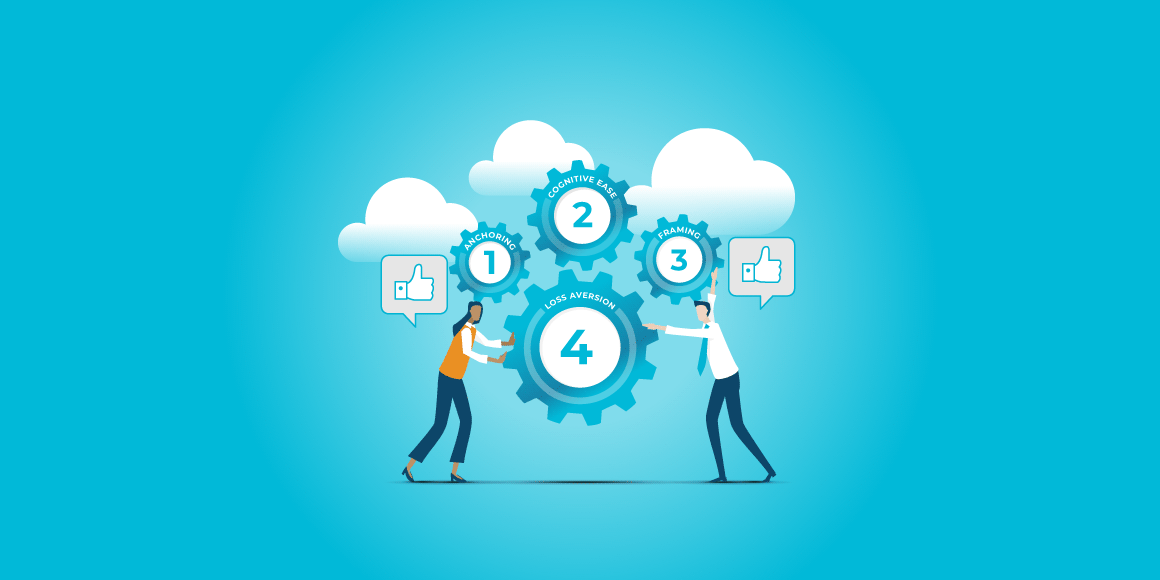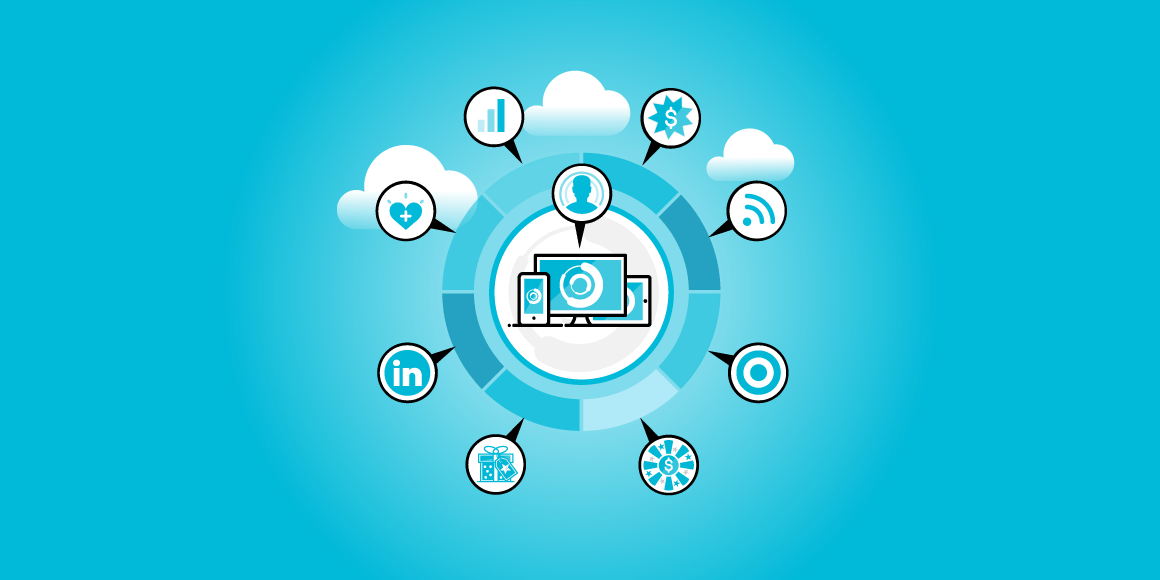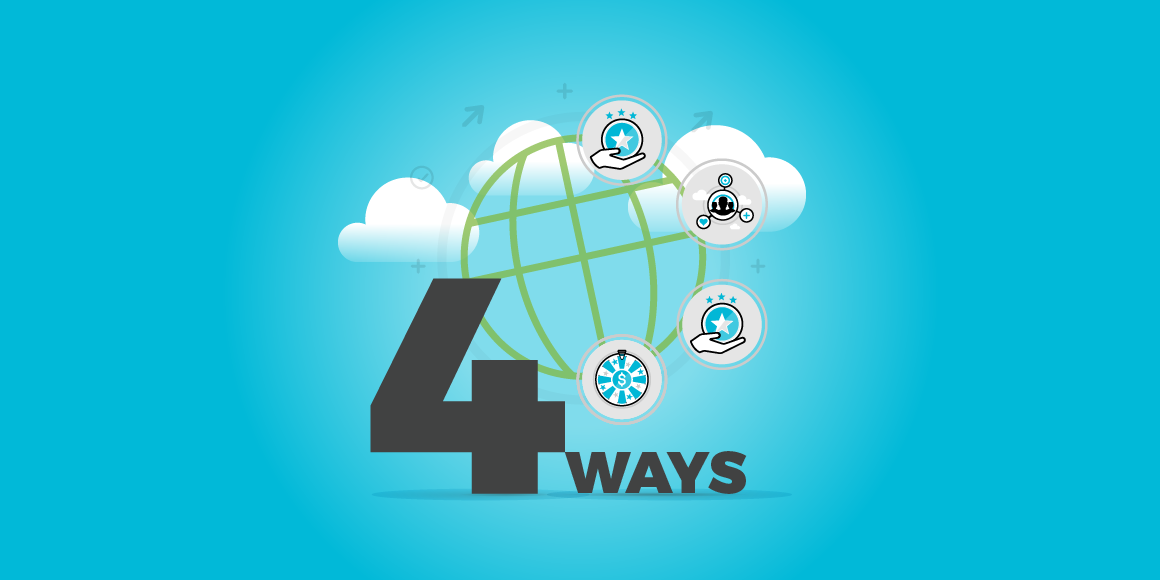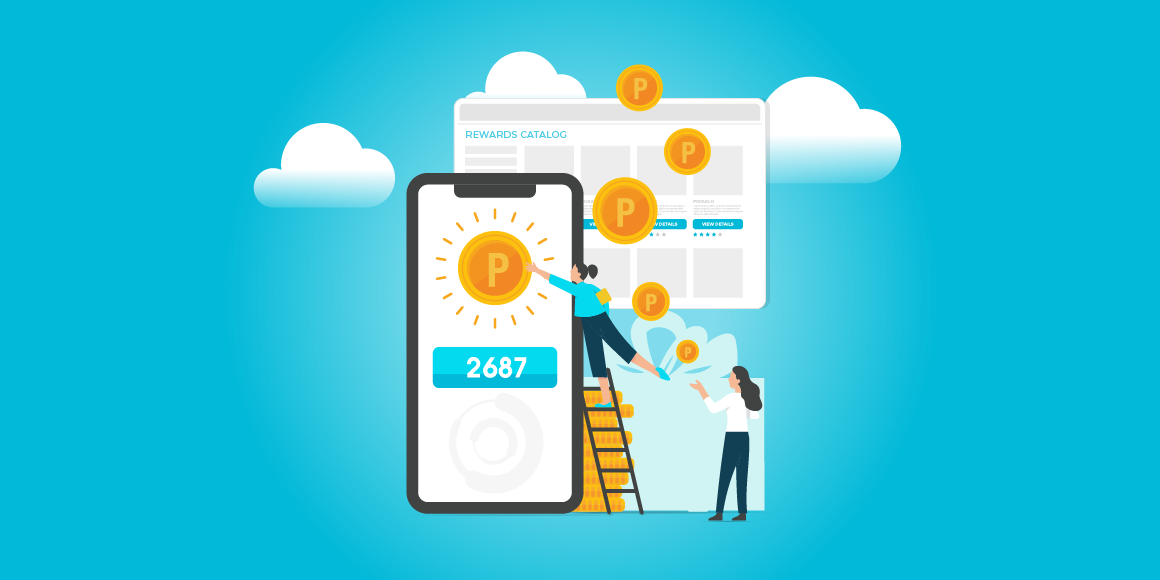Idioms, proverbs, sayings. Human beings tend to popularize sayings, like metaphors, to make sense of common themes we see in life. They help simplify a term we use every day in our programs: behavioral economics. Like, “the early bird gets the worm” being a metaphor for the benefits of being an early adopter.
In this article, we’ll explain a few key behavioral economics principles. We’ll share how they can help you grow your business, and some real-world examples. Last, we’ll tie each one to a common idiom, saying, or proverb. Let’s jump in.
First, What Is Behavioral Economics?
Think of behavioral economics as if you’re an architect building a house. You know you need a load-bearing support beam in a certain part of a house or else it will be prone to damage and collapse. Think of your go-to-market strategy the same way.
Behavioral economics is the science of getting people to buy or sell. The University of Chicago defines behavioral economics as a theory that “Applying elements of economics and psychology to understand how and why people behave.”
To go even further, the Incentive Research Foundation (IRF) defines it as such: “It helps organizations gain better understanding of their employees, customers, and other stakeholders. This understanding goes well past traditional economic notions of rational behavior. It enters the realm of how emotions influence peoples’ thinking, behaviors, and decisions.”
Okay, great. Why should we care?
This theory and its principles prove tested methods of motivation and incentivizing behavior. So, if we understand behavioral economics, we understand why people act the way they do.
This helps us build better strategies around loyalty, incentives, and motivation. Let’s take a look at 4 behavioral economics principles that can improve your business incentives strategy.
4 Behavioral Economics Principles
Behavioral economics consists of principles – different parts of the whole. On their own, they help us focus on a certain aspect of behavior. Together, they give us a whole picture of why.
Here are a few (we’ll get into the specifics in a minute, I promise):
- Anchoring
- Cognitive Ease
- Framing
- Loss Aversion
You can a list of more behavioral economics principles at The Wise Marketer. They say that the average human makes 35,000 decisions every day. How many influential decisions come from people with the knowledge of behavioral economics?
The classic example is sales and marketing. But sales and marketing are only two examples of how this gets employed. Some companies build their entire product line on principles from behavioral economics.
So, we understand what and why. Let’s dive into a few of the principles as promised.
Behavioral Economics Principle #1: Anchoring
Proverb: “You never get a second chance at a first impression.”
Definition: Anchoring is the bias to over rely on the first piece of information we receive about a topic. That can be a positive or negative bias, and it can happen in business- and non-business related contexts. Here are a few examples.
- Do you ever get mail from Capital One, Discover, or American Express? You may have seen the ones that promise 50,000 bonus points upon enrollment for their credit cards. By giving you a free set of points up front, you immediately get a taste of what it’s like to be a high roller. From that point on you strive to earn the same amount with them again. Clever!
- A first-time customer goes to your online store and purchases a few pieces they need to complete a job. Delivery takes 3 days. Great! But then their order gets delayed a week, and they needed that material sooner.
Their Anchoring bias is going to tell them you can’t handle online orders. This could even be a one-time supply chain issue—Doesn’t matter.
Business/Incentive Case: Anchoring can have a positive or negative effect on first-time customers. It can affect their view of your company and your capabilities to serve them. Paying extra close attention to new customer acquisition can negate bad first impressions.
When launching an incentive loyalty program, offering points early can create an Anchor. This makes them feel it’s easy to earn and solidifies engagement with the program. Any negotiation has Anchoring built into it. No one wants to say the first number because that sets the stage for the rest of the conversation.
Principle #2: Cognitive Ease
Acronym/Saying: K.I.S.S or Keep It Simple, Stupid
Definition: Cognitive Ease is the measure of how easy it is for our brains to process information.
Something that is simple is usually better. How many times has the length and complexity of an email or instruction manual caused you to shut down?
Don’t tell me you haven’t skipped the instructions because you thought you could figure it out yourself. Ikea has a few staple differentiators. One is the fact that their products are somewhat easy to build compared to their competition.
Last night, I put the shelves of a new entertainment system on backwards. It turns out it was because they didn’t label things as easy as I’d like them to. I had to take the entire thing apart to fix it. Ikea’s instructions, by contrast, are simple and easy to follow.
Business/Incentive Case: Keeping Cognitive Ease in mind is a good idea for any part of your business. If it’s difficult to buy or sell your product, the threshold to buy will usually be much higher.
If you sell complex products, it’s a good idea to provide training that makes it easier to understand.
The two biggest hurdles of an incentive loyalty program are enrollment and engagement. There should be as few obstacles to these two conversions as possible. If your program gets bogged down with a lot of rules to enroll or to earn, it’s destined to fail.
Ask yourself, “are things easy because I perceive them as easy? Is an outsider without my knowledge going to think the same?”
Principle #3: Framing
Idiom: “You can catch more flies with honey than you can with vinegar.”
Definition: Framing is the act of adjusting the context of a message to make it more receptive.
In other words, it’s in how you say things as much as what you say.
In my spare time, I’ve been shopping around for some nostalgic memorabilia. Classic sites to find this stuff are Etsy, eBay, or Mercari. I finally found one piece I wanted on Mercari. Moments later, I got an email from Mercari saying “We found some other items you might like.”
The body of the email said, “We’re sorry, the item you found has been bought. But here are a few other items you might find interesting.” It was disappointing, but I appreciated Mercari went out of their way to frame some bad news with good news by offering items I’d like.
For another example, take Blueland, a company built on framing. The company sells plastic-free cleaning products. All their products and shipping come in either glass or cardboard. Its products are all built into the context of you doing good for the planet by buying their products.
Moreover, for those of us who care to make an impact, this kind of framing in their marketing is inspiring.
Business/Incentive Case: Framing is one of the most important things to track. Whether it’s with your employees, stakeholders, or customers, communication is key. Open communication is always a good thing. It’s important to frame things in a way that’s easy to understand, more impactful, and reduces friction.
Product launches can flop when they’re not communicated well to the right audience. An incentive program can fail if it seems like earning is too difficult. Bottom line: Framing communication can help you reduce friction.
Principle #4: Loss Aversion
Saying: “A bird in the hand is worth two in the bush.”
Acronym: “FOMO”, or “fear of missing out.”
Definition: Loss Aversion covers a lot of financial and behavioral concepts. Generally, we split loss aversion into two aspects:
- Not wanting to lose things—the urge for people to hold onto what they have rather than risk a larger gain and lose it.
- Not wanting to miss things like experiences, capital gains, or opportunities
Think fads, limited time offers, free trials. QVC , for example, has built its entire business model on Loss Aversion. They do this with fluctuating prices, timed deals, and exclusive quantities. Fitbit does this well. From their fad-like demand for their watches to their curated workout program. It’s all loss aversion.
They create easy ways for friends and family to compete with one another. They can share their goals and workout results, etc. This makes it easy to feel left out if you don’t have one.
They also use gamification to their advantage in this way. The thought of blowing a 5-day streak motivates you to get back to the gym on that 6th day, even if it is a Saturday.
Business/Incentive Case: Creating an international product fad like Fitbit or QVC may not be as possible in the B2B space. But you can still garner a sense of FOMO and Loss Aversion within an incentive program. An incentive program can create give-back programs that reward performers up front. If they don’t hit their goal for the month or quarter, they may have to give back their reward.
Additionally, group incentive travel is the ultimate reward. Having a trip that’s offered to your best performers can create a fear of missing out if they’re not on that trip.
Conclusion
These are only four of the many principles that govern behavioral economics. We may explore a few more in the future, but we like to live by these in particular. They help us ground our programs into principles that we know move the needle. They also help our clients understand why the things they do will work.
At the end of the day, you will need to experiment to understand what works for you and your audience. To get started, we recommend reading IRF’s piece on Applying Behavioral Science. It’s a great source to help you keep things ethical while experimenting with this theory.
Do you want to learn more about behavioral economics? Check out the podcast Behavioral Grooves. It’s a wealth of information on why we do what we do.






